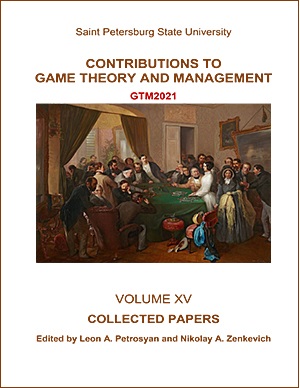Equilibrium Supply-Demand Allocation in a Single-Commodity Network
DOI:
https://doi.org/10.21638/11701/spbu31.2022.10Abstract
This paper is devoted to the recent findings in the analytical research of supply-demand allocation in a single-commodity network with distant (in space) suppliers and consumers. The allocation problem is formulated as an equilibrium flow assignment problem with affine functions of demand, supply, and logistic costs in a network represented by a digraph with suppliers and consumers located in nodes. We offer a brief overview of supply-demand relocation patterns obtained for elastic, shortage, and overproduction cases. Such kinds of results seem valuable since they allow one to develop different competitive distribution models to facilitate the decision-making of supply chain managers. In particular, supply chain managers can use available patterns to design decision-making strategies that mitigate risks concerning disruption or ripple effects.
Keywords:
nonlinear optimization, distribution network, relocation, homogeneity
Downloads
References
Downloads
Published
How to Cite
Issue
Section
License
Articles of "Contributions to Game Theory and Management" are open access distributed under the terms of the License Agreement with Saint Petersburg State University, which permits to the authors unrestricted distribution and self-archiving free of charge.




